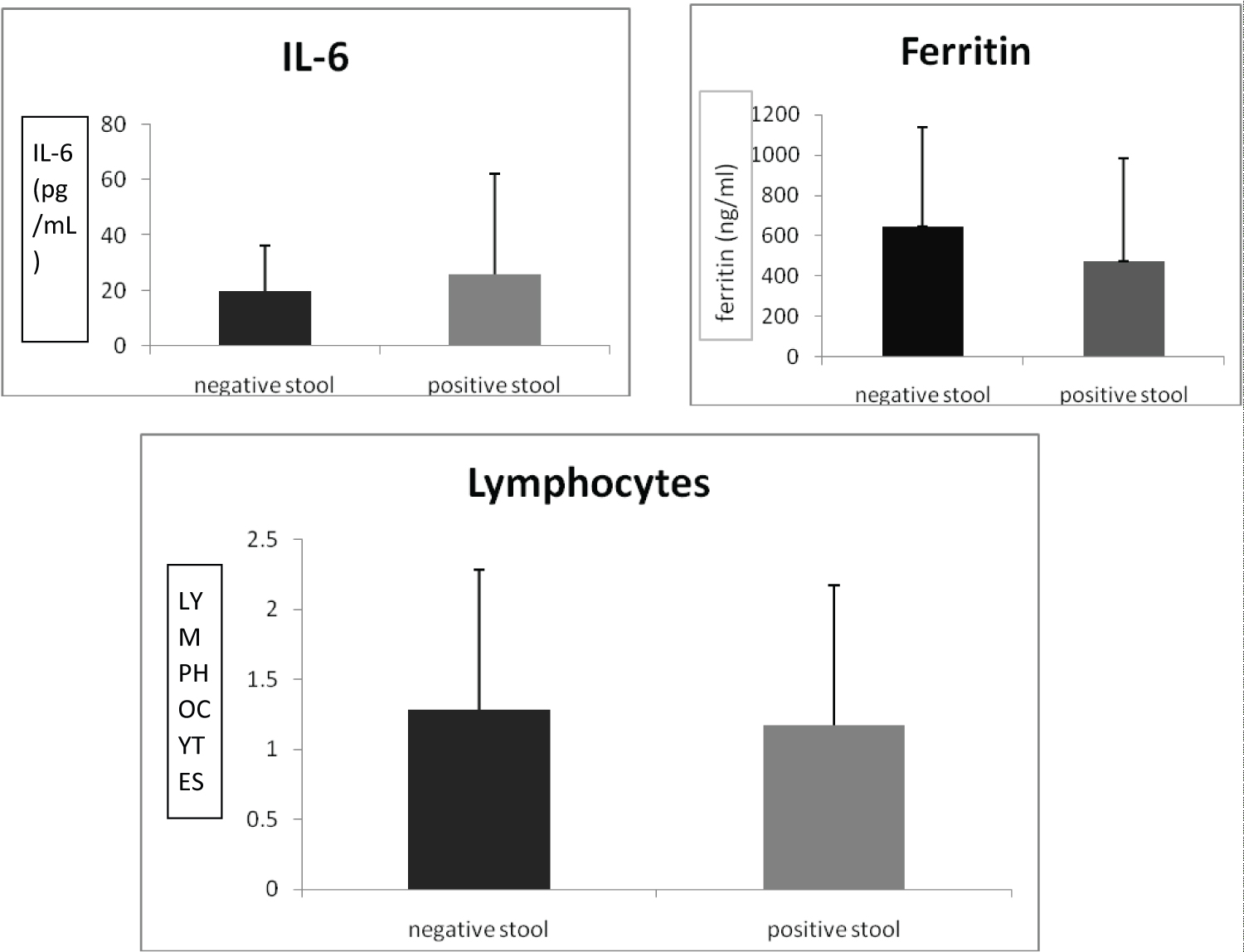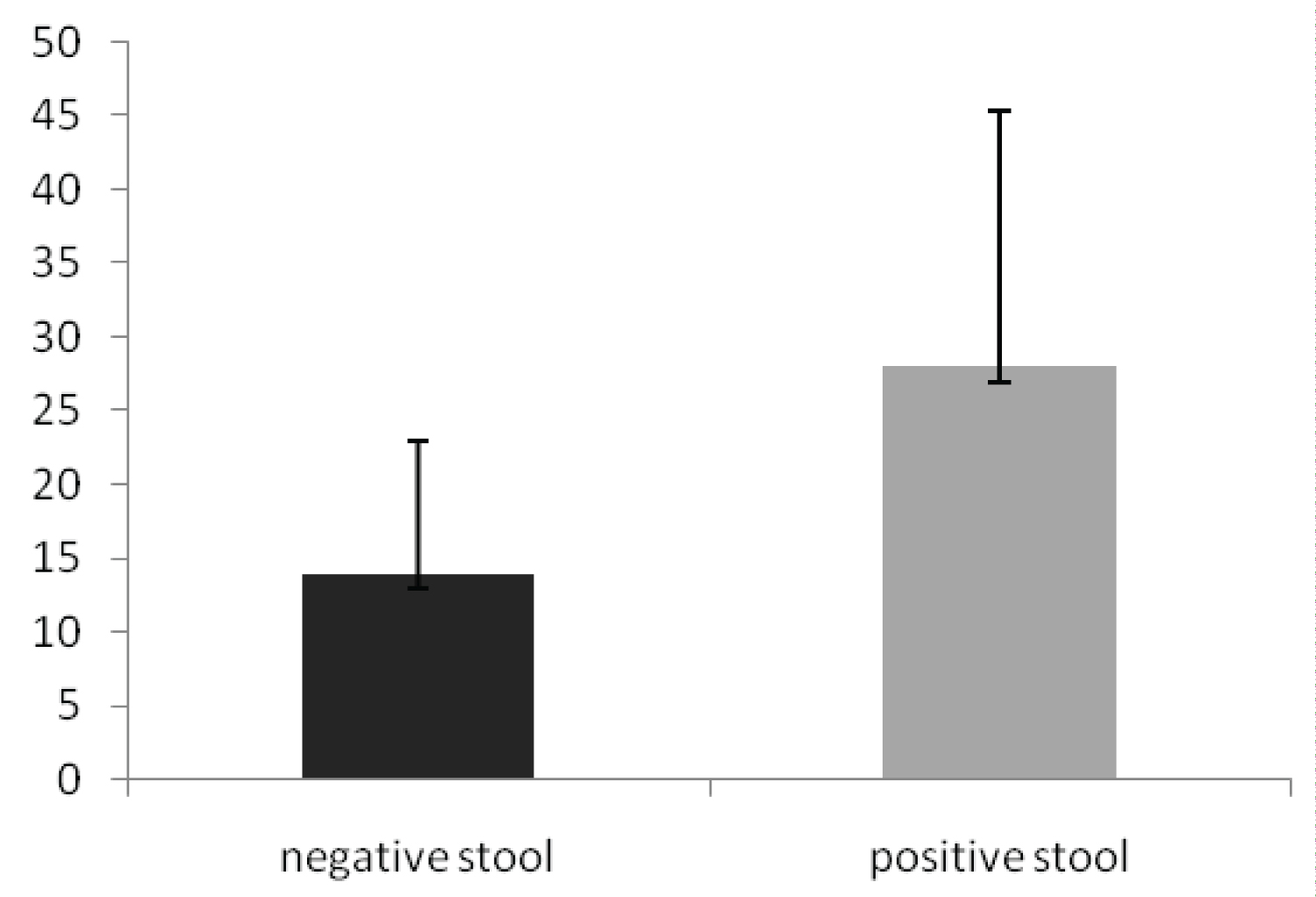The coronavirus disease 2019 (COVID-19) pandemic, caused by severe acute respiratory disease coronavirus 2 (SARS-CoV-2), has led to millions of confirmed cases and deaths worldwide. Despite the recent availability of vaccines, with the ongoing and rapid spread of SARS-CoV-2 worldwide, laboratory testing remains the cornerstone of public health containment and mitigation strategies. Also, although not used routinely in many laboratories, detecting SARS-CoV-2 RNA from stool is possible in the presence or absence of gastrointestinal symptoms. The replication of virus in the gastrointestinal tract may be not consistent with that in the respiratory tract and the fecal-oral transmission may occur even after viral clearance in respiratory tract. We recommend that fecal RNA testing of SARS-CoV-2 should to routinely perform during the hospitalization and recovery stage.
Severe acute respiratory syndrome coronavirus 2 (SARS-CoV-2) emerged in China, causing a major outbreak of severe pneumonia COVID-19, and spreading to > 200 other countries. SARS-CoV-2 shares 80% identity with SARS-CoV [1,2], and both viruses use the angiotensin-converting enzyme 2 (ACE2) as a cellular entry receptor [3,4]. SARS-CoV2 is mainly spread through respiratory droplets and by fomites. Real-time reverse transcriptase polymerase chain reaction (RT-PCR) on oro-pharyngeal and nasopharyngeal (OP/NP) swab samples is considered the gold standard routine method for detection of SARS-CoV-2. Apart from laboratory tests specific for detecting SARS-CoV-2 biochemical markers like lymphocytes, IL-6 and ferritin, is used to assess a patient's health or identify possible clues to a disease state and increased illness severity include [5]. Beyond the respiratory system, other potential organs of involvement include intestine, hepatobiliary system, heart, kidney, or central nervous system, many of which express high levels of ACE2, the main receptor for viral entry. These findings indicate that tissue with high ACE-2-expression could be at higher risk for viral shedding. Gastrointestinal symptoms with vomiting and diarrhea are often reported as other manifestations of the disease [3,6]. SARS-CoV-2 has also been isolated 30 from anal/rectal swabs and stool and other modes of transmission [1,7] have been proposed including fecal-oral route, their relative importance is still being investigated [8]. Furthermore, recent studies reported that the virus can persist for a long time in feces. Also, although not used routinely in many laboratories, detecting SARS-CoV-2 RNA from stool is possible in the presence or absence of gastrointestinal symptoms [9-11].
It is unclear whether the virus in feces is infectious and might be an additional source for transmission and whether the virus can directly infect the intestine by passing the respiratory system. Either way, the virus may infect, replicate, and shed from the enterocytes and possibly hepatocytes/cholangiocytes and be excreted as fecal materials into the environment, contaminating water and food supplies. The possibility of culturing SARS-CoV-2 from stool opens discussions regarding the possibility of fecal-oral transmission and human health or ecological risks [4,12,13] and also opens the opportunity for research into community-based surveillance in low-prevalence settings using wastewater [9]. Our objective was to determine the prevalence of GI symptoms at presentation of COVID-19 and clinical outcome and viral shedding in stool of patients with confirmed SARS-CoV-2 infection.
We analyzed serial samples of n.82 hospitalized patients for SARS-CoV-2 disease by real-time reverse-transcriptase PCR (GeneFinder™ COVID-19 Plus RealAmp Kit) of the NP swab and feces. At admission, for each patients, we have analyzed IL-6, ferritin and lymphocytes value. The patient's average age was 58.65 ± 15.9 years (range: 22-90 years). COVID-19 patients were classified as mild, moderate and severe according to WHO (WHO Clinical Management of COVID-19. Interim guidance, 27 May 2020). Stool specimens of patients were collected for the detection of viral RNA at multiple time points during the hospitalization and recovery stage.
82 patients were enrolled in the study, these were laboratory-confirmed cases tested positive for SARS-CoV-2 RNA in NP swabs. Out 34 of patients n. 34 (41.4%) showed mild pneumonia, n. 18 (22%) moderate pneumonia, n. 30 (36.6%) severe pneumonia. 40 of 82 (48.8%) patients tested positive for SARS-CoV-2 in feces, and 42 of 82 (51.2%) patients tested negative (Figure 1).
 Figure 1: % positive and negative stool in COVID patients.
View Figure 1
Figure 1: % positive and negative stool in COVID patients.
View Figure 1
Among patients with positive stools, 18 out of 40 (45%) had mild pneumonia, 6 out of 40 (15%) moderate pneumoniae, 16 out of 40 (40%) severe pneumonia (Table 1). The presence of SARS-CoV-2 in the stool is not related to the age of the patients. It should be noted that compared with patients tested SARS-CoV-2 RNA negative in feces, patients tested SARS-CoV-2 RNA positive exhibited no higher occurrence rate of gastrointestinal symptoms.
Table 1: Correlation between severity of illness and presence of SARS-CoV-2 in stool. View Table 1
At admission, in patients with negative feces the IL6 value was 20 ± 16.07 (normal range 0-6.4 pg/mL), ferritin 646 ± 493 (normal range 11-307 ng/mL) and lymphocytes 1.28 ± 071 (normal range 1.5-3.5); in patients with positive feces IL6 was 25.9 ± 36.42; ferritin 475 ± 511 and lymphocytes 1.17 ± 1.05 (Figure 2a, Figure 2b and Figure 2c).
 Figure 2: (a) IL-6 in positive and negative stool; (b) Ferritin in positive and negative stool; (c) Lymphocytes in positive and negative stool.
View Figure 2
Figure 2: (a) IL-6 in positive and negative stool; (b) Ferritin in positive and negative stool; (c) Lymphocytes in positive and negative stool.
View Figure 2
No significant difference was observed in two groups. The SARS-CoV-2 RNA positive in stool does not affects to outcome patient but negative conversion in NP swab in patients with negative feces was 14 ± 8.9 days, in patients with positive feces was 28 ± 17.3 days. The significant difference was observed in two groups (p value < 0.0002) (Figure 3). N. 16/40 (40%) patients remained positive for viral RNA in the feces after the NP swabs turned negative. The duration of viral shedding from the feces after negative conversion in pharyngeal swabs was 4-7 days.
 Figure 3: Negative conversion in NP swab.
View Figure 3
Figure 3: Negative conversion in NP swab.
View Figure 3
Reverse transcriptase polymerase chain reaction (RT-PCR) results in the upper respiratory tract represent a major concern for the clinical management of COVID-19 patients [14]. In our study, 82 patients were enrolled and out 40 of 82 were detected the SARS-CoV2 in stool. Analyzing the values of the IL-6 and ferritin, markers associated with increased illness severity, no significant difference was found between patients with positive stool and negative stool and the positivity stool was not related to patient's age. On the other hand, in patients with positive stools, the NP swab turned negative in a significantly longer time in respect to patients with negative stool (p < 0.0002). Furthermore out 16 of 40 patients, the SARS-CoV-2 was detected in stool also after the NP swab was turned negative.
The replication of virus in the gastrointestinal tract may be not consistent with that in the respiratory tract and the fecal-oral transmission may occur even after viral clearance in respiratory tract. Despite the recent availability of vaccines [15], with the ongoing and rapid spread of SARS-CoV-2 worldwide, laboratory testing remains the cornerstone of public health containment and mitigation strategies. We recommend that fecal RNA testing of SARS-CoV-2 should to routinely perform during the hospitalization and recovery stage, for different reasons: a) For diagnostic support in doubtful cases, for some patients, viral shedding in stool can occur for a longer period than in the respiratory samples and could help diagnose infection if upper and lower respiratory tract specimens are negative but there is a high suspicion of disease [12,16,17]. b) At recovery stage to provide patients on the risk of transmission and to provide the precaution that should be continue until the negative conversion of viral RNA in feces; c) Gastrointestinal system and liver patients with acute COVID-19 often present with gastrointestinal symptoms and liver impairment, attributed to hypoxia-mediated injury, drug-induced hepatitis, veno-occlusive disease and direct invasion by SARS-CoV-2 via ACE2, which is richly expressed in hepatocytes/bile duct cells and enterocytes, Although all patients with positive stools and NP swab were negative, the SARS-CoV-2 persistence in the stool could be a clinical significant related to long-covid?
All authors have not financial or non financial competing interests to declare in relation this manuscript.
MVM has made substantial contribution to conception and design of the project, he has been involved in drafting the manuscript; SG and VM and analysis of the data; NE have made substantial contribution to acquisition the data; AM and FG has made substantial contribution to critical revision of the articles for important intellectual content. All the authors read and approved the final manuscript.
Drafting of articles: MV Mauro; Collection of data: S Greco; Vitiritti M, Vangeli S, Elia N; Analysis and interpretation of the date: MV Mauro, S Greco, Mastroianni A; Critical revision of the article for important intellectual content: A Mastroianni, F Greco; Final approval of the articles: Mauro MV, Greco S, Vitiritti M, Elia N, Mastroianni A, Greco F.